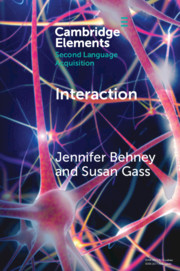Element contents
Interaction
Published online by Cambridge University Press: 06 September 2021
Summary
- Type
- Element
- Information
- Online ISBN: 9781108870627Publisher: Cambridge University PressPrint publication: 23 September 2021
References
- 10
- Cited by

